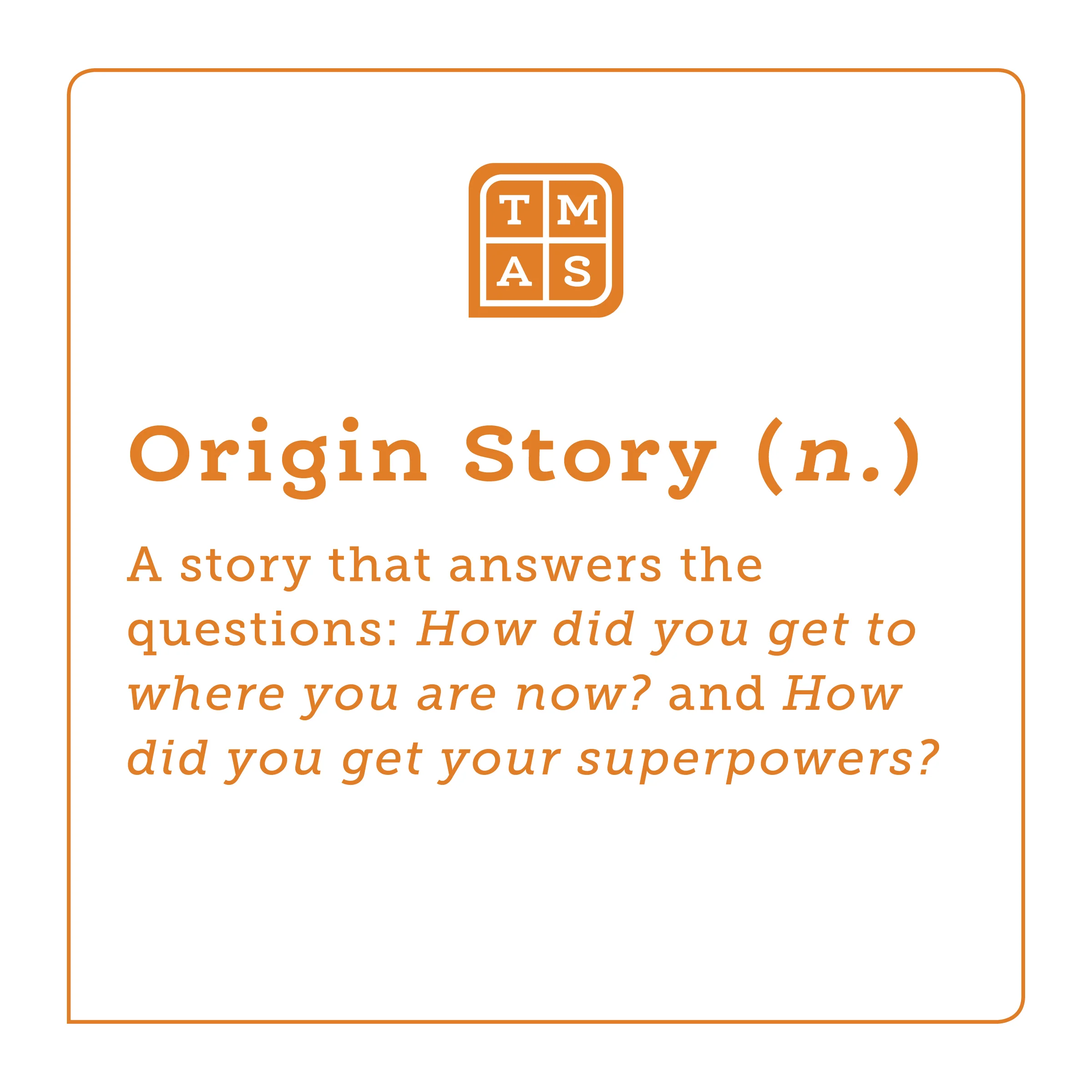It might be a year or so too late, but a Marie Kondo metaphor is in order. When the quantity of personal narrative ideas are piling so high in your brain that you cannot see the quality that lies within, it’s time to declutter.
When beginning to craft your personal narrative it can feel like there are so many places that you could begin. And when you are overwhelmed by the number of starting points, it makes it all the more difficult to begin the story brainstorming process. There are two common anxieties when it comes to crafting a story that you want to share with your audience. The first is the deep rooted belief that you don't have a story worth telling. There are many many reasons why this statement is false. Every single one of us has a story worth sharing. It doesn’t have to be monumental. You just need to have a purpose for sharing it. The second major worry when it comes to finding the right story to tell is the feeling of having so many personal narrative ideas that you just can’t wrap your head around where to start. Here’s where the tidying up comes in. To find the best story to tell, you need to brain dump all of the ideas out of your head and then check in with each one to see whether or not it sparks joy.
Here is a simple process for harnessing your personal narrative ideas into a very specific story that you feel passionate about sharing.
Find your WHY
What is your reason for telling a story?
What do you need it for?
What message are you trying to convey?
Here’s a WHY that a lot of my clients have shared in workshops and working in 1-on-1 coaching sessions: I need a story that best captures who I am and what I want to be known for.
This WHY applies to many different life situations — whether you’re running your own business, you’re making a name for yourself as a leader, or you’re building out your personal brand.
2. Spend some time with a writing prompt.
A great prompt for connecting your WHY to the stories in your head is writing out a response to the question: How did you get to where you are now?
This is the first question that will help you with putting together your Origin Story.
Tell Me A Story's definition of a personal narrative Origin Story is this:
For starters, just focus on the question “How did you get to where you are now?”. If you want to read up more on the second question, read another one of our blog posts: Finding Your Superpowers.
3. Test out a few different answers to this Origin Story prompt.
Try writing out a few different answers to the question “How did you get to where you are now?” It's possible to have more than one Origin Story, so long as they all link up to your WHY in some way.
4. Identify if your personal narrative ideas are scars or wounds.
If you are going back through your answers to this prompt and you are starting to question whether or not these are things you feel comfortable sharing about yourself, take some time for deeper reflection.
Is the life experience that you are writing about in a wound phase or a scar phase? Meaning is there enough emotional and temporal space between you in the present moment and this life experience you are thinking of sharing with your audience? This is going to be different for everyone, but ultimately you should feel passionate about sharing this story — even if the circumstances within the story feel vulnerable or complicated.
In Brene Brown's Netflix special The Call To Courage she talks a lot about the discernment between over-sharing and true vulnerability. She believes that you only have to share your story to an audience that has earned the right to hear it. This applies even to those stories in a scar phase. The best personal narrative ideas to stick with are the ones that you feel passionate about sharing with your desired audience. The power of personal narrative happens in the exchange between the storyteller and the listener, but it must spark joy in you first. For any of your story ideas still in the wound phase, make a list and then put that list aside to sort through again at a later date.
5. Be strategic.
Once you’ve spent time with your WHY, the writing prompt, testing out a few answers to that first Origin Story question, and making sure you have a story that is comfortable for you to share, you can fine-tune it. It's a matter of being strategic while still being you. And that's where the crafting of the personal narrative comes in to play.
First you need to brainstorm and land on the story that you want to tell. And when you find that story, identify its purpose — not just for your audience but for you. Why do you feel compelled to share this specific story to this specific audience at this specific time? And from there you can begin to craft it. You'll build the story's structure, bring it to life, and find the several versions that will help you to get your personal narrative ideas out into the world.


